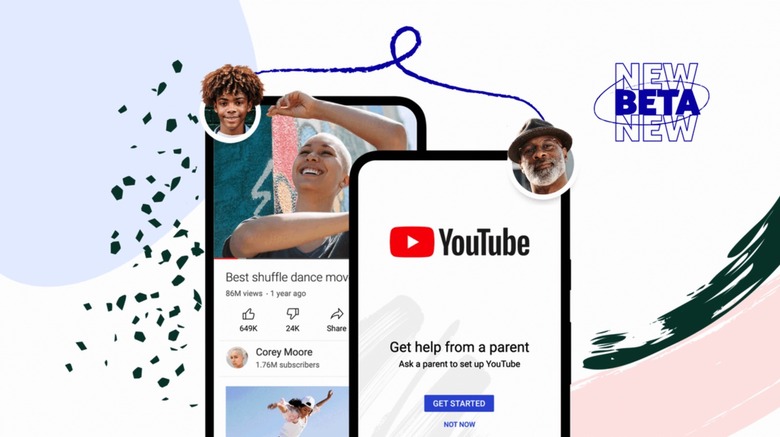YouTube Is Giving Parents A Way To Transition From YouTube Kids
- Google announced on Wednesday new parental controls for YouTube to allow parents to offer an age-appropriate YouTube experience to children who outgrow the content in YouTube Kids.
- The new YouTube supervised experiences will come with three tiers of access that parents will choose from to adapt to their kids' age and needs.
- The YouTube experience will feel identical to the full YouTube app, but children will not be able to access content inappropriate for their age.
- Initially, this version of YouTube will also lack creation support and access to comments. In-app purchases will be disabled, and YouTube will not show ads (or ads in specific categories).
You don't have to pay for YouTube TV to use YouTube for entertainment purposes. There are a seemingly unlimited number of videos on the site, but the full YouTube experience isn't especially safe for children who are just starting to explore parts of the internet that were previously restricted to them.
The current parental controls in YouTube — YouTube Kids — doesn't help parents manage access for their teenagers, however. That's why Google announced a new type of YouTube experience on Wednesday meant to allow parents to slowly open access to the full YouTube environment to children to are outgrowing YouTube Kids.
The new supervised experiences mode will be available to children over 13, featuring various access tiers that would allow parents to control what their children can watch on the internet-connected devices they have access to.
The new supervised mode will roll out in the coming months in beta form. Parents will be able to allow their children access to YouTube through a supervised Google Account or a Google Account that parents create for their children. Parents can then manage that account via a Family Link app.
The new parental control settings for this restricted version of YouTube will include three tiers of access, allowing parents to adapt to their children's needs as they grow up. The "Explore" version is the most restrictive of the three and follows the YouTube Kids experience. Parents can upgrade it to "Explore more" and then to "Most of YouTube." Here's what each of these tiers includes:
Explore: For children ready to move on from YouTube Kids and explore content on YouTube, this setting will feature a broad range of videos generally suitable for viewers ages 9+, including vlogs, tutorials, gaming videos, music clips, news, educational content and more.
Explore More: With content generally suitable for viewers ages 13+, this setting will include an even larger set of videos, and also live streams in the same categories as "Explore."
Most of YouTube: This setting will contain almost all videos on YouTube, except for age-restricted content, and it includes sensitive topics that may only be appropriate for older teens.
Google says that children won't even know that their YouTube experience is different, as it will feel "much like regular YouTube" access. Certain features will be restricted, in addition to the content deemed inappropriate for the age group. Google also says that ads will be censored but not entirely removed. Google says that "we won't serve personalized ads or ads in certain categories."
Also, in-app purchases will be disabled at launch, together with the creation of content and the comments feature. "Since self-expression and community are integral parts of YouTube and children's development, over time, we'll work with parents and experts to add some of these features through an age-appropriate and parent controlled approach," the blog post reads.
Depending on the access they have on shared devices or their own devices and how tech-savvy they are, kids will be able to circumvent these parental controls and experience the full version of YouTube. But parents have creative ways at their disposal to prevent children from visiting YouTube on those devices through other means than the supervised mode.
